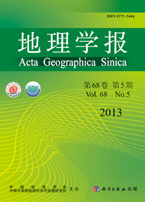LIU Zhenhuan, LI Zhengguo, TANG Pengqin, LI Zhipeng, WU Wenbin, YANG Peng, YOU Liangzhi, TANG Huajun
Rice is one of the most important staples in China. Rice's spatial-temporal distributions, which are vital to agricultural, environmental and food security research, are affected by natural conditions as well as social-economic developments. In recent years, most of agricultural land use change studies are focused on cultivated land change and its impact, while few are focused on arable crop area change because crop sown area estimates are based on statistics by administrative units, and such data lack accurate information on spatial and temporal variations. Other estimates are based on remote sensing, such data limited by spatial resolution which is difficult to capture the finer information of crops. Thus, multi-source data integration has become an effective way to determine spatial distributions of crops. Spatial Production Allocation Model (SPAM) is a multi-source data integration model that integrated arable land distribution, administrative unit statistics of crop data, agricultural irrigation data, and crop suitable data. It applied a cross-entropy method to allocate the statistics data of crop area and production down to such a fine spatial location, such as a pixel. This research uses the SPAM-China model to get a series of spatial distributions of rice area and production with a 10-km pixel at national scale, based on long-term county-and province-level agricultural statistics since the early 1980s, and then, analyzes the pattern of spatial and temporal changes. The results show that there are significant changes in rice in China during 1980-2010. Overall, more than 50% of rice area decreased, while nearly 70% of rice production increased in the change region during 1980-2010. Spatially, most of the increased area and production were in Northeast China, especially, in Jilin and Heilongjiang, most of the decreased area and production were located in southeastern China, especially, in rapidly urbanized provinces of Guangdong, Fujian and Zhejiang. Thus, the centroid of rice area was moved to northeast approximately 230 km since 1980, and rice production around 320 km, which means rice production moves northeastward faster than rice area because of the significant rice yield increase in Northeast China. The results also show that rice area change has a decisive impact on rice production change. Approximately 54.5% of the increase in rice production is due to the expansion of sown area, while around 83.2% of the decrease in rice production is due to shrinkage of rice area. This implies that rice production increased may be due to area expansion and other non-area factors, but reduced rice production could largely be attributed to rice area decrease.
